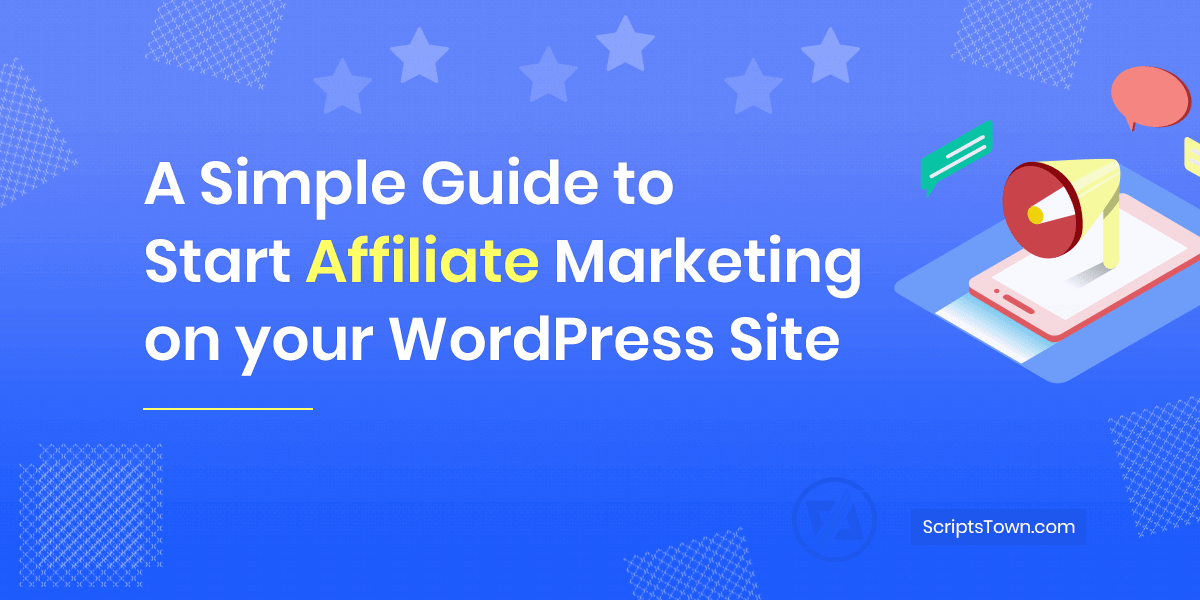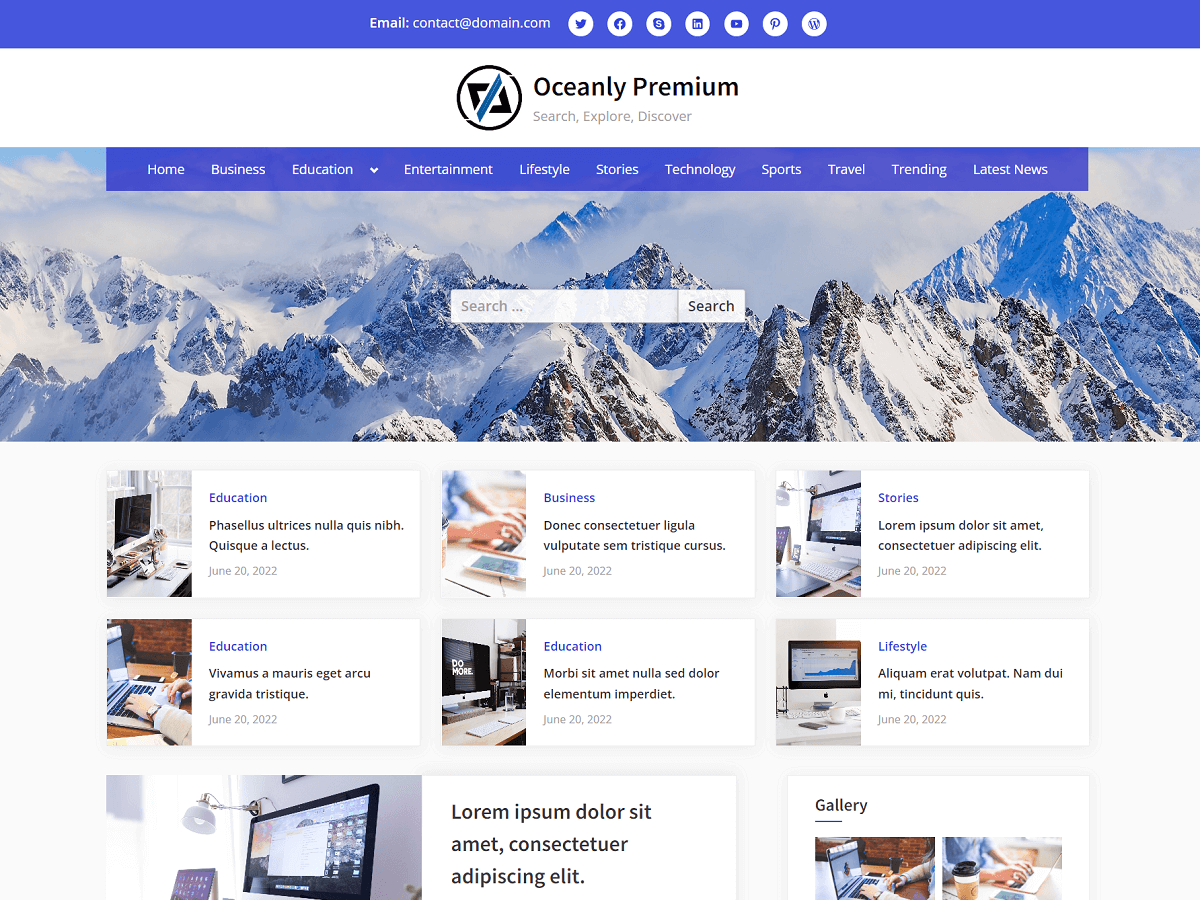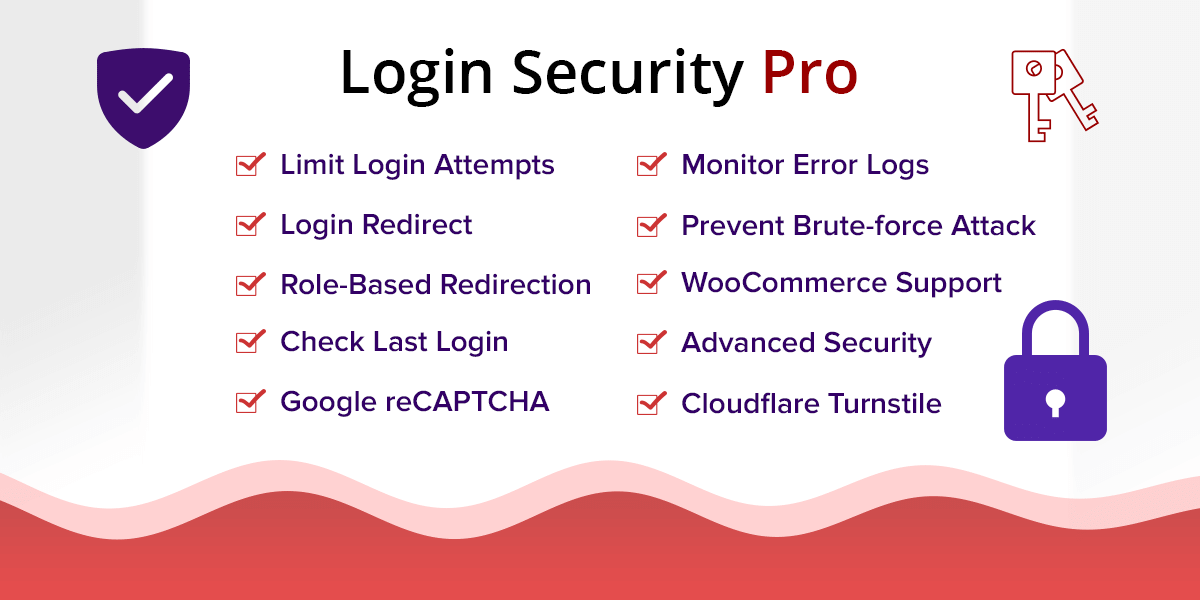Affiliate marketing is an excellent way to monetize your WordPress site. With the right tools and strategies, you can promote products and services and earn a commission on each sale. In this guide, we cover the best tips on how to start affiliate marketing on WordPress.
Choosing the Right Niche
Choosing the right niche is crucial for the success of your affiliate marketing efforts. Here’s what you need to know:
- Research your audience: Understand your target audience and their interests to choose a niche that resonates with them. You can use call center solutions in the process to conduct surveys and have more flexible communication with them.
- Choose a profitable niche: Look for niches that have high demand, high profitability, and offer good commission rates. Also, you can explore sub-niches within your chosen niche. This can help you narrow down your focus and cater to a more specific audience, which may result in less competition and greater opportunities for success.
- Focus on your interests: Choose a niche that aligns with your personal interests and expertise to create engaging content. This way, you will be able to create compelling and authentic content that resonates with your audience.
- Trending topics and long-term potential: Stay up-to-date with the latest trends in the market and look for a niche that is currently popular. It’s also important to consider the long-term sustainability of your chosen niche. Look at historical trends and try to predict whether the niche will remain relevant in the coming years.
- Seasonality: Investigate whether your chosen niche is subject to seasonality. Niches like holiday-related services experience fluctuations in demand throughout the year. Being aware of this can help you plan your content and promotions accordingly.
- Examples: Green products business, fashion, health, and wellness.
Choose the Right Affiliate Marketing Theme
There are many clean and professional affiliate marketing themes for WordPress. Choosing the right WordPress theme can help you create a professional-looking website and optimize your content. This is crucial for the success of affiliate marketing.
Here’s what to look for in a theme:
- Clean and professional design: Choose a theme with a design that fits your brand.
- Easy customization options: Look for themes that offer simple customization options.
- SEO-optimized theme: Choose a theme with a properly structured layout.
- Fast loading speed: Make sure the theme is not bloated with many dependencies, it should be fast for better user engagement and search engine rankings.
Examples: A green WordPress theme for eco-friendly products, a fashion theme for a fashion affiliate site, and a health and wellness theme for a wellness blog.
Finding and Joining Affiliate Programs
Finding and joining the right affiliate programs is important for earning commissions effectively. Here’s how to do it:
- Research affiliate programs: Look for affiliate programs that offer products or services related to your niche. This will help to maximize the relevance of your promotions.
- Check the commission rates: Choose programs that offer good commission rates.
- Consider cookie duration: Check the cookie duration of affiliate programs to ensure you have enough time to earn commissions.
- Payment frequency and method: Research the affiliate program’s payment frequency and method. Ensure they offer payment options that are convenient for you, such as direct deposits, PayPal, Stripe, or checks. Also, consider whether they pay commissions monthly, bi-weekly, or on another schedule that suits your needs.
- Providers of marketing materials: Check if the product provider offers any promotional tools. This includes advertising methods such as banners, pre-written information, etc. Most affiliate product providers have these resources readily available.
- Analyze competition: Research the competition to see if there are already successful affiliates promoting the same products.
- Join affiliate programs: Sign up for affiliate programs and start promoting their products. You can join multiple affiliate programs to diversify your income sources.
- Evaluate product quality and reputation: Ensure that the affiliate products you promote have a good reputation and meet high-quality standards to build trust with the audience.
Examples: Joining an affiliate program for eco-friendly products, partnering with a fashion brand for affiliate marketing, and promoting health and wellness products.
Creating Quality Content and Improving SEO
Creating quality content is essential to engage your audience. Here are some tips for creating great content:
- Provide value: Create content that solves problems and offers value to your audience.
- Strong brand: Focus on building a strong brand presence within your chosen niche.
- Content strategy: Plan your content strategy for your chosen niche. Identify the types of content you’ll create, such as reviews, how-to guides, product comparisons, engaging storytelling, etc. You can also use SEO for lead generation by optimizing your content with relevant keywords, creating compelling meta descriptions, and ensuring your website is easily navigable for both users and search engine crawlers. This diverse range of content can help attract a broader audience.
- Use visual elements: Use images, videos, and infographics to make engaging content.
- Optimize for SEO: Use relevant keywords and optimize your content for search engines.
- Comprehensive articles: Create in-depth articles that cover the topics comprehensively. These in-depth articles not only provide high-quality information to the readers but also contribute to better SEO rankings.
- WordPress SEO plugin: Plugins like Yoast SEO can improve SEO significantly.
- Relevant backlinks: Reach out to other sites to build relevant backlinks to your content.
- Utilize structured data: Use structured data markup so as to provide search engines with more information about the content.
- Optimize your images: Use alt tags and descriptive file names for your images.
- Optimize for mobile: Ensure your website and content are mobile-friendly for the small-screen, mobile users. You can also create powerful mobile apps for your clients with a no-code white label app builder for your agency.
Examples: A blog post about the benefits of using eco-friendly products, a review of a popular fashion brand, and a guide to healthy living.
Integrate Affiliate Links Seamlessly into WordPress
Integrating affiliate links seamlessly into your WordPress content is key for successful affiliate marketing. This process involves strategically placing relevant affiliate links within your blog posts, pages, or other areas of your website in a natural and unobtrusive manner. This should not compromise the user experience and integrity of your website.
Seamless link placement is about finding that sweet spot where you can offer valuable recommendations to your readers while also earning commissions from qualified referrals.
Practical Tips for Seamless Integration of Affiliate Links
Here are some practical tips for a seamless integration of affiliate links:
- Relevance: Only incorporate affiliate links that are relevant to the topic of your content. If you’re writing about gardening tips, it wouldn’t make sense to include affiliate links for video game consoles. Irrelevant or mismatched affiliate links can erode trust with your readers and make your recommendations less effective.
- Disclosure: Transparency is essential to build trust. Clearly disclose affiliate relationships to the audience, either through a dedicated disclaimer page or within the content itself. You may also include a brief disclaimer at the beginning or end of your content.
- Link placement strategy: Carefully find where to place affiliate links within your content for maximum impact. Aim to position links in highly visible areas, such as within product reviews, recommendation lists, or call-to-action buttons. However, avoid overloading your content with too many links, as this can detract from the user experience.
- Natural integration: Avoid forcibly inserting affiliate links. It should be contextual and natural. For example, if you’re writing a review or a tutorial related to a specific product, you can include affiliate links when mentioning the product or its features.
- Anchor text: Use descriptive and relevant anchor text for all of your affiliate links. Avoid generic phrases like “click here”. Instead, use anchor text that accurately describes the product or service you’re promoting. This is good for both accessibility and SEO.
- Affiliate link management: You may use a dedicated affiliate link management plugin for WordPress, such as Pretty Links, ThirstyAffiliates, and so on. These plugins can help you organize and track your affiliate links more efficiently.
Promoting Your WordPress Site to Build Audience
Building an audience is key to the success of your affiliate marketing efforts. You can collect emails from your audience and send newsletters and updates about your affiliate products. Also, you can respond to comments and feedback to engage with your audience.
Social media is a powerful tool to promote your content and drive traffic to your WordPress site. There are various platforms available to you, including Facebook, Instagram, Google Ads, and X (formerly Twitter). In this section, we will explore some tips and tricks for utilizing these platforms to promote your blog and grow your audience.
Social Media & Advertisement Platforms to Promote Your Content
- Facebook ads: You can target your audience based on demographics, interests, and behaviors. To get the most out of your Facebook Ads, make sure your ad copy is clear and concise and your images are eye-catching and relevant to your blog post.
- Instagram: A highly visual platform that can help you showcase your blog post in a creative way, offering the potential to become an Instagram influencer. You can utilize Instagram Stories to give your followers a behind-the-scenes look at your blog post creation process. Also, you can create Instagram Reels and schedule your content to showcase your blog post’s main points in a fun and engaging way.
- Google ads: Google Ads can help you target users who are searching for keywords related to your blog post. Make sure your ad copy includes relevant keywords and a strong call-to-action to encourage users to click through to your blog post.
- X (formerly Twitter): A great platform to promote your blog post and engage with your followers. Use relevant hashtags to reach a wider audience and encourage reposts, shares, and likes of your WordPress blog post.
- Pinterest: Create stunning pins for your blog posts to encourage clicks, saves, and shares among a diverse Pinterest audience. You can also make use of keywords and descriptive captions to optimize discoverability.
For example, if you have a blog post about green products and businesses, then you could create a Facebook Ad targeting users interested in eco-friendly products.
Promotion with Guest Blogging and Collaborations
Another great way to promote your affiliate links or WordPress website is by using guest blogging. It is a way to collaborate with other bloggers or website owners to offer them valuable content. This way you also establish yourself and expand your reach. Here are the tips to make the most of guest blogging and collaborations:
- Pitch unique ideas: When pitching guest blog ideas, think about how your content can stand out and provide something different with unique perspectives.
- Adhere to guidelines: When submitting guest posts to other bloggers, carefully read and follow their guidelines. This shows professionalism and respect for their platform. Guidelines often include word count, formatting, and content requirements.
- Optimize author bio: Highlight your expertise in the author bio section. Also, mention your WordPress site, and include a call-to-action that encourages readers to visit your site or explore your affiliate products.
- Leverage your network: Utilize your existing network of connections, such as fellow bloggers or industry professionals, to explore collaboration opportunities. Networking can lead to guest posting opportunities, joint ventures, and cross-promotion.
- Expert roundups: Participate in expert roundups hosted by other bloggers or websites. Share a valuable tip or insight related to your niche, along with a link to your WordPress site and relevant affiliate products.
- Podcast interviews: Collaborate with podcast hosts in your niche and offer to be a guest on their show. Discuss topics related to your expertise and subtly promote your website and affiliate products during the interview.
- Affiliate product giveaways: Partner with other bloggers or influencers to host affiliate product giveaways and free trials. This creates excitement as well as drives traffic to your WordPress site and increases the chances of affiliate conversions.
Drive Affiliate Sales through Video Promotions
Incorporating informative videos on your WordPress site can significantly boost affiliate sales. When embedding videos, consider the following tips and guidance:
- Strategic CTAs: To encourage viewers to explore affiliate product pages, you can place clear and compelling Calls to Action (CTAs), strategically in videos.
- Interactive video end cards: Add interactive end cards to your videos where you can feature recommended products, related content, or additional resources.
- Enhanced blog posts: Embed videos seamlessly within the content of your WordPress blog posts to enrich user engagement.
- Dynamic product showcases: Use step-by-step video guides to demonstrate affiliate products’ features, illustrating their value and benefits.
- Respond to comments: Actively respond to comments made on the videos to address viewers’ queries, concerns, and feedback. It creates a unified community spirit while providing information about the affiliate products to anyone reading your responses.
- Authentic reviews: Share honest reviews, user experience, and testimonials through video to build trust and credibility.
For instance, a WordPress travel website could feature a video review of a booking platform, highlighting its ease of use and cost savings. On the other hand, a WordPress blog about cooking could feature video tutorials showcasing kitchen appliances, accompanied by genuine reviews and easy purchase links.
Review Writing Technique in Affiliate Marketing
Another technique in affiliate marketing for driving sales of affiliate products is writing review articles. To create a solid review article on your WordPress blog, you need to follow certain guidelines that ensure clarity and engagement without overwhelming your readers.
- Clarity and conciseness: Keep your review articles clear and concise. When you write product reviews, try not to overwhelm your readers with excessive details, such as lists of downsides, benefits, and customer experiences with the product. Focus on the core aspects of the product that matter most to your audience. Provide just enough information to help them make an informed decision.
- Balance pros and cons: Focus on both the advantages and disadvantages of the product. Avoid exaggerating the benefits while ignoring any drawbacks. An honest evaluation builds trust with your audience and leads to more sales.
- Establish a personal connection: Write in a conversational tone to make your reviews more personal and relatable. Being polite and conversational in your review writing helps readers connect with your thoughts and feelings about the product.
- Visual elements: Include high-quality visuals such as product photos or screenshots from various angles in your review articles. Visual elements allow readers to visualize the product and gain a better understanding of its appearance.
- Engage with ratings: You can enhance reader engagement by adding a 5-star rating system to your content. This common practice in review writing offers readers a quick overview of your overall assessment.
Scaling Your Affiliate Marketing Efforts
Once you start to get the promising results of your affiliate marketing efforts, you would want to scale up and take it to the next level.
Here are some great strategies and tips for scaling your affiliate marketing efforts:
- Diversify your affiliate product selection: Explore and identify complementary services or products that align with your audience’s interest. For instance, if you run a food blog, in addition to promoting kitchenware products, you can also promote recipe books, cooking classes, or meal delivery services.
- Explore new promotional methods: Experiment with different marketing channels. This can include email newsletters, social media campaigns, YouTube ads, and influencer partnerships to endorse your affiliate products or services.
- Attend industry events: Take part in relevant forums, seminars, conferences, podcasts, and webinars to build a network with other affiliate marketers. This is to learn about new products, exchange insights, share tactics, and gain exposure to new audiences.
- Regularly update your content: Keep content fresh and update outdated information.
- Provide incentives for referrals: Prompt your audience to refer others by offering incentives like discounts, exclusive content, or additional bonuses.
- Test and experiment: Continuously test different marketing strategies, offers, variations of landing pages, and calls to action to optimize conversions and find what works best. For example, a WordPress e-commerce blog site can experiment with different color schemes, button placements, and discount offers to maximize conversions.
Conclusion
Affiliate marketing with WordPress is a great way to earn by promoting products and services. By following the strategies and tips in this guide, you can choose the right niche, create quality content, build an audience, join the right affiliate programs, and choose the best affiliate marketing themes for WordPress. Remember to focus on providing value to your audience, engaging with them, and optimizing your content for conversions.










